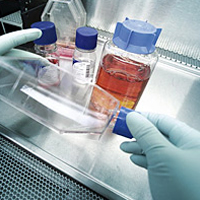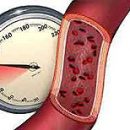Non-Hodgkinsky lymphomas are a group of diseases with lesion of lymphatic nodes. The reason for the development of the disease is the mutation of DNA lymphocytes. Lymph treatment is to carry out chemotherapy. In 4 stages of the disease, a bone marrow transplantation is shown.
Content
The concept of non-Hodgkin lymphomas
 Non-Hodgkinsky lymphomas are a whole group consisting of 30 related diseases. Lymphoma is a type of cancer affecting a lymphatic system consisting of lymph nodes (small closed clusters of lymphocytes), combined with small vessels.
Non-Hodgkinsky lymphomas are a whole group consisting of 30 related diseases. Lymphoma is a type of cancer affecting a lymphatic system consisting of lymph nodes (small closed clusters of lymphocytes), combined with small vessels.
The main task of the lymphatic system is to combat infections using three types of lymphocytes: T, B cells and «Natural killers». Most lymphocytes are in lymphatic nodes, but can be detected in many other parts of the body, in particular in the bone marrow, spleen and peripheral blood.
With a non-Hodgkin lymphoma, DNA mutation occurs in one of the lymphocytes, which leads to the appearance of a large number of poorly formed lymphocytes, struggling in tumor masses inside the lymph nodes and in other parts of the body. The exact cause of DNA mutation leading to the development of non-Khodgkin lymphoma is unknown, but under suspicion there is a number of chemicals, especially herbicides and pesticides. Most types of non-Hodgkinsky Lymph are rarely found in children, the average age of patients is 50-60 years.
Symptoms and diagnosis of the disease
General symptoms of the disease include an increase in lymph nodes on the neck, in the area of the armpits or in the larynx. Malignant lymphocytes are blind outside the lymph nodes, as a result, subcutaneous formations are formed in bones, lungs and liver.
The patient makes complaints on the heat, fatigue, loss of appetite, sweat very much at night. Since the lymph nodes swell when the body struggles with infection, in itself an increase in lymph nodes cannot be considered as a sign of lymphoma. Lymphoma is diagnosed only after the biopsy (research under the microscope of the sample of lymphocytes) and identifying a significant number of affected lymphocytes. Biopsy samples are taken from lymph nodes or leather, from the lungs, liver, etc.D., That is, from there, where the lymphoma can be localized.
Treatment of lymphoma
The purpose of treatment is to achieve complete remission by removing the maximum possible number of malignant lymphocytes. Two main methods of treatment - chemotherapy (radiation therapy) and bone marrow transplantation.
Chemotherapy
As a rule, chemotherapy includes the use of a combination of several drugs that kill malignant lymphocytes. Drugs are usually used by 3--4-week cycles, which, however, depends on the exact diagnosis, it is possible to use other chemotherapy schemes.
Such primary chemotherapy lasts 6-12 months, during which healthy cells also kill drugs, so patients undergoing chemotherapy may suffer from various side effects, including nausea, fatigue, increased sensitivity to infections.
Bone marrow transplantation
Stem cells are non-invalid cells, bloodstream predecessors, subsequently developing in three types of blood cells - leukocytes, red blood cells and platelets. Currently, stem cells are obtained from bone marrow, cord blood or from the peripheral blood of the donor. Regardless of the source, stem cells have the potential ability to treat various blood diseases, bone marrow and immune system when replacing the malignant bone marrow and the patient's immune system.
With a non-Hodgkinsky lymphoma, bone marrow transplantation is often used in the treatment of patients who have been primary or during treatment with resistance (lack of effect from treatment) to chemotherapy. In order to overcome this resistance, very high doses of chemotherapy products are used, which destroy not only malignant cells, but also the patient's bone marrow. The bone marrow function is restored by inflexion to the patient of its stem cells. Such a transplant is called autologous, and this is the main type of transplant with non-Hodgkinsky Lymphoma.
With allogeneic bone marrow transplantation, hematopoietic stem cells are used, taken from another donor, or related or unrelated, detected in the donor base. Usually allogeneic transplantation is used in the 4th stage of non-Hodgkin Lymphoma. At the 4th stage, the spread of tumors beyond the limits of lymph nodes to other organs - into the lungs, liver, bone marrow. It is important to emphasize that the decision to conduct transplantation can be accepted only by the patient himself and its close people.









